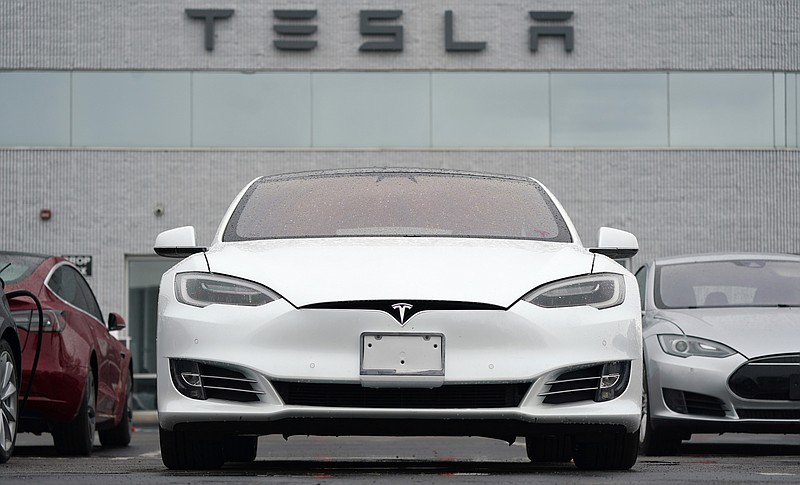DETROIT -- Home security camera footage shows that the owner of a Tesla got into the driver's seat of the car shortly before a deadly crash in suburban Houston, according to a government report Monday.
But the preliminary report on the crash that killed two men doesn't explain the mystery of why authorities found no one behind the wheel of the car, which burst into flames after crashing about 550 feet from the owner's home. Nor does it conclusively say whether Tesla's Autopilot partially automated driver-assist system was operating at the time of the crash, although it appears unlikely.
The National Transportation Safety Board said it's still investigating all aspects of the crash. An onboard data storage device in the console, however, was destroyed by fire. A computer that records air bag and seat belt status as well as speed and acceleration was damaged and is being examined at an agency lab.
The agency said it tested a different Tesla on the same road, and the Autopilot system could not be fully used. Investigators could not get the system's automated steering system to work, but were able to use the Traffic Aware Cruise Control feature.
Autopilot needs both the cruise control and the automatic steering to function. Traffic Aware Cruise Control can keep the car a safe distance from vehicles in front of it, while auto-steer keeps it in its own lane. The report said the road also did not have lane lines. That could have have been why the automatic steering wouldn't work.
"The NTSB continues to collect data to analyze the crash dynamics, postmortem toxicology test results, seat belt use, occupant egress and electric vehicle fires," the agency said in its report. "All aspects of the crash remain under investigation as the NTSB determines the probable cause."
The agency says it intends to issue safety recommendations to prevent similar crashes.
The April 17 crash happened at night on a two-lane residential road in Spring, Texas. Both the 59-year-old owner and the 69-year-old passenger were killed.
The agency's report said the 2019 Model S went off the road on a curve, drove over a curb, hit a drainage culvert, a raised manhole and a tree.
The crash damaged the high-voltage lithium-ion battery, where the fire began.
Local authorities said one man was found in the front passenger seat, while another was in the back.
The report didn't say how fast the car was going, but Harris County Precinct Four Constable Mark Herman said it was a high speed. He would not say if there was evidence anyone tampered with Tesla's system to monitor the driver, which detects force from hands on the steering wheel. The system will issue warnings and eventually shut the car down if it doesn't detect hands. But critics say Tesla's system is easy to fool and can take as long as a minute to shut down.
Consumer Reports said in April that it was able to easily trick a Tesla into driving in Autopilot mode with no one at the wheel.
The safety board, which has no regulatory authority and can only make recommendations, said it's working with the National Highway Traffic Safety Administration on the probe. That agency has the power to make vehicle safety regulations. The federal probe is running at the same time as a parallel investigation by local authorities, the board said.

